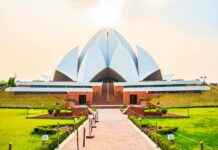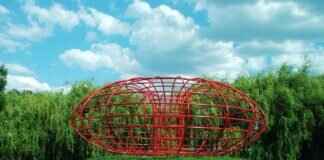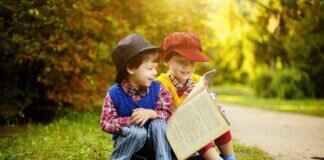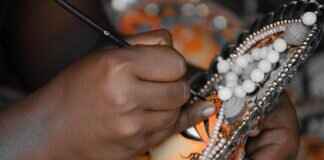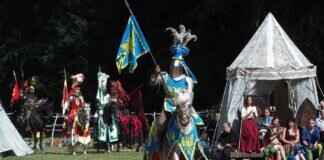This article delves into the rich tapestry of Indian art and culture within the vibrant setting of New York City. It highlights the evolution of this unique fusion, the influences that have shaped it, and the remarkable contributions made by artists from both communities. As we explore this intersection, we gain insights into how Indian art has not only found a home in New York but has also enriched the city’s cultural landscape.
The Historical Context of Indian Art in New York
Understanding the historical backdrop of Indian art in New York is essential to appreciate its evolution and significance in the contemporary art scene. The journey began in the early 20th century when Indian artists started migrating to the United States, seeking new opportunities and platforms for their work. This migration was further fueled by the global interest in Indian culture during the 1960s and 70s, a period marked by a growing fascination with Eastern philosophies and aesthetics.
As Indian communities established themselves in New York, they brought with them rich traditions of art, ranging from classical forms such as miniature painting and sculpture to contemporary practices. This exchange has led to a vibrant dialogue between traditional Indian art and modern artistic expressions found in New York, creating a unique blend that resonates with diverse audiences.
The Influence of Indian Culture on New York’s Art Scene
Indian culture has profoundly impacted New York’s artistic landscape, introducing unique aesthetics and philosophies that resonate with diverse audiences. From the intricate patterns of Indian textiles to the vibrant colors of traditional paintings, Indian art has enriched the visual vocabulary of New York’s art scene. This influence is evident in various artistic disciplines, including painting, theater, and dance.
Moreover, Indian festivals celebrated in New York, such as Diwali and Holi, have also played a significant role in showcasing Indian art forms. These events not only attract large audiences but also provide a platform for artists to present their work, fostering a deeper understanding and appreciation of Indian culture within the broader New York community.
Key Indian Artists Making Waves in New York
A closer look at prominent Indian artists who have established their presence in New York reveals a rich diversity of talent and themes. Artists like Rina Banerjee and Subodh Gupta have gained international recognition for their innovative approaches that blend traditional Indian motifs with contemporary issues. Their works often explore themes of identity, migration, and the complexities of modern life.
These artists not only contribute to the cultural fabric of New York but also engage in dialogues that challenge perceptions and provoke thought. Their exhibitions often serve as a bridge between Indian heritage and contemporary global issues, making their work relevant to a wide audience.
Emerging Artists and Their Unique Styles
Highlighting the fresh perspectives of emerging Indian artists in New York reveals a dynamic and evolving art scene. New artists are increasingly experimenting with innovative techniques, combining traditional Indian art forms with modern materials and concepts. This fusion creates a unique aesthetic that captivates audiences and challenges traditional norms.
For instance, artists like Shivangi Narula and Prashant Pandey are known for their experimental approaches that incorporate technology and multimedia into their work. By doing so, they not only pay homage to their cultural roots but also push the boundaries of what Indian art can represent in a contemporary context.
The Role of Galleries and Exhibitions
Galleries and exhibitions play a crucial role in promoting Indian art in New York, providing platforms for artists to showcase their work and connect with audiences. Institutions such as the Asia Society and Guggenheim Museum have been instrumental in featuring Indian artists, offering exhibitions that highlight the diversity and richness of Indian art.
These venues not only facilitate the display of artworks but also engage the public through educational programs, talks, and workshops. By fostering a deeper understanding of Indian art and culture, these institutions help bridge the gap between different communities, encouraging cultural exchange and dialogue.
Major Exhibitions Featuring Indian Art
Notable exhibitions that have highlighted Indian art in New York showcase the diversity and richness of this cultural fusion. Events like the “Indian Summer” exhibition at the Metropolitan Museum of Art and various contemporary art fairs have brought Indian artists into the limelight, allowing them to reach broader audiences.
These exhibitions not only celebrate the artistic achievements of Indian artists but also provide a platform for critical discussions about identity, globalization, and the role of art in society. Through these events, the complexities of Indian art are explored, inviting viewers to engage with the narratives presented in each piece.
The Fusion of Traditional and Modern Techniques
The blending of traditional Indian art techniques with modern practices creates a unique aesthetic that captivates New York’s art enthusiasts. Artists are increasingly reinterpreting traditional methods, such as block printing and mural painting, within a contemporary framework. This fusion allows for a dialogue between the past and present, enriching the artistic landscape of New York.
Contemporary artists are pushing boundaries, infusing traditional methods with modern themes and materials to create thought-provoking pieces. The result is a vibrant art scene that not only honors Indian heritage but also reflects the complexities of modern life, making it relevant to today’s audiences.
The Impact of Indian Art on Local Communities
Indian art has a significant impact on local communities in New York, fostering cultural exchange and understanding through various initiatives. Cultural festivals celebrating Indian art provide opportunities for artists to engage with the community and share their heritage. Events like the New York Indian Film Festival and India Day Parade not only showcase artistic talents but also promote a sense of belonging among the Indian diaspora.
Art education programs focusing on Indian art help engage local communities, promoting awareness and appreciation of diverse artistic expressions. These initiatives often include workshops, lectures, and interactive sessions that invite participation from individuals of all backgrounds, further enriching the cultural dialogue within the city.
The Future of Indian Art in New York
The future of Indian art in New York looks promising, with ongoing collaborations and innovations that continue to enrich the cultural tapestry of the city. Emerging trends in Indian art, such as digital art and environmental themes, are likely to shape its future in New York. Artists are increasingly utilizing technology to create immersive experiences that resonate with contemporary audiences.
Collaborations between Indian and local artists foster cross-cultural dialogues, creating a dynamic environment for artistic exploration and growth. These partnerships not only enhance the visibility of Indian art but also contribute to a broader understanding of cultural diversity in New York.

The Historical Context of Indian Art in New York
The historical context of Indian art in New York is a fascinating narrative that intertwines cultural exchange, migration, and artistic evolution. Understanding this backdrop is essential to appreciate how Indian art has transformed and gained significance in the contemporary art scene. The journey of Indian art in New York can be traced back to the early 20th century, when the first Indian artists began to migrate to the United States, bringing with them rich traditions and unique artistic expressions.
Initially, Indian art was introduced to New York through exhibitions and cultural events that aimed to showcase the vibrant heritage of India. The 1931 exhibition at the Metropolitan Museum of Art, titled “Indian Art,” was one of the first significant showcases of Indian art in the city. This exhibition featured a range of artworks, from ancient sculptures to contemporary pieces, and laid the groundwork for future appreciation of Indian aesthetics in the Western world.
As the years progressed, the influx of Indian immigrants, especially during the 1960s and 1970s, led to a more profound integration of Indian art into New York’s cultural fabric. Artists like Raja Rao and Yasmin Jahanmir began to establish their presence in the art scene, blending traditional techniques with modern themes. This period marked a pivotal shift as Indian artists started to gain recognition not just for their cultural heritage but also for their innovative approaches that resonated with contemporary audiences.
The 1980s and 1990s saw a surge in interest in Indian art, fueled by globalization and the rise of multiculturalism. Galleries such as Gujral Foundation and Vadehra Art Gallery became instrumental in promoting Indian artists, providing platforms for exhibitions and fostering dialogues around identity and cultural representation. This era also witnessed the emergence of Indian art fairs, which attracted collectors and art enthusiasts, further solidifying the presence of Indian art in New York.
Today, the historical context of Indian art in New York is characterized by a dynamic interplay of tradition and modernity. Artists continue to explore their cultural roots while engaging with global themes, resulting in a rich tapestry of artistic expressions. The significance of Indian art in the contemporary scene is evident in major exhibitions and art fairs that frequently feature Indian artists, highlighting their contributions to the global art discourse.
Moreover, the historical backdrop serves as a reminder of the resilience and adaptability of Indian art. It reflects the journey of artists who have navigated through various cultural landscapes, often challenging stereotypes and redefining narratives. The evolution of Indian art in New York is not just a story of artistic expression; it is a testament to the power of art as a medium for cultural exchange and understanding.
In summary, understanding the historical context of Indian art in New York is crucial for appreciating its evolution and significance in today’s art scene. From early exhibitions to contemporary showcases, Indian art has carved a niche that continues to inspire and engage audiences across the globe.

The Influence of Indian Culture on New York’s Art Scene
Indian culture has significantly influenced the artistic landscape of New York City, creating a vibrant tapestry that blends traditional aesthetics with contemporary expressions. The infusion of Indian philosophies and artistic practices has not only enriched the local art scene but has also resonated with a diverse audience, fostering a deeper understanding of cultural narratives.
Indian culture’s impact on New York’s art scene is profound and multifaceted. Artists from India and the Indian diaspora have introduced unique aesthetics that challenge conventional norms and encourage dialogue around identity, spirituality, and social issues. This cultural exchange has led to a dynamic environment where traditional Indian art forms coexist with modern artistic practices, creating a unique fusion that captivates audiences.
One of the most notable aspects of this influence is the incorporation of traditional Indian motifs and techniques into contemporary art. Artists often draw inspiration from classical Indian art forms such as Madhubani, Pattachitra, and Warli painting, reinterpreting these styles through a modern lens. This blending of old and new allows for a rich exploration of themes such as migration, globalization, and cultural identity.
Furthermore, Indian art in New York has become a platform for addressing pressing social issues. Many artists utilize their work to comment on topics such as gender equality, environmental sustainability, and cultural heritage. By doing so, they not only share their personal narratives but also engage with broader societal conversations, making their art relevant to a wider audience.
The presence of Indian art in New York is also supported by various galleries and cultural institutions that showcase these artists’ work. For instance, institutions like the Asia Society and the Rubin Museum of Art regularly feature exhibitions that highlight the contributions of Indian artists, providing them with a platform to reach diverse audiences. These exhibitions often include a mix of traditional and contemporary pieces, further emphasizing the dialogue between different artistic expressions.
Moreover, cultural festivals such as India Day and the South Asian Arts Festival celebrate Indian art and culture, bringing together artists, performers, and audiences. These events foster community engagement and promote cultural exchange, allowing New Yorkers to experience the richness of Indian heritage firsthand.
In addition to established artists, emerging talents are also making their mark in New York’s art scene. Young Indian artists are increasingly exploring themes of identity and belonging, often reflecting their experiences as part of a diaspora. Their innovative approaches challenge traditional narratives and create space for new dialogues within the art community.
In conclusion, the influence of Indian culture on New York’s art scene is undeniable. It has not only introduced unique aesthetics and philosophies but has also fostered a deeper understanding of cultural intersections. As artists continue to explore and reinterpret their heritage, the vibrant fusion of Indian and contemporary art will undoubtedly continue to evolve, enriching the cultural fabric of New York City.
Key Indian Artists Making Waves in New York
New York City, a melting pot of cultures and artistic expressions, has become a significant hub for Indian artists seeking to showcase their work and connect with diverse audiences. The presence of Indian artists in New York has not only enriched the city’s cultural landscape but has also facilitated a dialogue between traditional Indian art forms and contemporary practices. This section delves into the lives and works of several prominent Indian artists who have made their mark in New York, highlighting their contributions and the themes they explore.
- Rina Banerjee: Known for her intricate installations that blend various materials, Rina Banerjee’s work often addresses themes of migration, identity, and cultural hybridity. Her pieces, which incorporate elements from her Indian heritage alongside Western influences, challenge viewers to reconsider notions of belonging and cultural exchange.
- Ravi Agarwal: An artist and environmental activist, Ravi Agarwal’s work focuses on the intersection of art, technology, and ecology. His installations often utilize recycled materials and explore the impact of urbanization on the environment, making a poignant statement about sustainability and responsibility.
- Bharti Kher: Bharti Kher’s art is characterized by her use of the traditional Indian technique of bindi application, which she employs to create striking contemporary artworks. Her pieces often reflect themes of femininity, identity, and cultural symbolism, inviting viewers to engage with complex narratives surrounding womanhood and heritage.
- Atul Dodiya: A prominent figure in the Indian contemporary art scene, Atul Dodiya’s work often draws inspiration from Indian history and mythology. His paintings and installations incorporate a variety of styles and mediums, reflecting his deep engagement with both Indian and Western art traditions.
- Shilpa Gupta: Shilpa Gupta’s multimedia installations often explore themes of borders, identity, and the concept of home. Her work is deeply rooted in socio-political contexts, addressing issues such as nationalism and the experiences of marginalized communities.
These artists not only represent the rich tapestry of Indian art but also engage with universal themes that resonate with a global audience. Their presence in New York serves as a bridge between cultures, fostering a greater understanding of the complexities of identity and the shared human experience.
The contributions of these artists extend beyond their individual practices; they are part of a larger movement that seeks to redefine the narrative of Indian art in the contemporary context. By participating in exhibitions, collaborating with local artists, and engaging with the community, they are helping to create a vibrant dialogue that enriches both the Indian and New York art scenes.
As we explore the work of these artists, it becomes evident that their contributions are not just confined to the art world. They are actively shaping cultural perceptions and encouraging conversations about identity, heritage, and the dynamic interplay between tradition and modernity. In doing so, they are paving the way for future generations of artists to continue this vital dialogue.
Emerging Artists and Their Unique Styles
In the bustling art scene of New York, a new wave of emerging Indian artists is making a significant impact, bringing fresh perspectives and innovative techniques that challenge traditional norms. These artists are not only redefining their cultural heritage but also reshaping the broader narrative of contemporary art. This subheading delves into the unique styles of these artists and the ways in which they are influencing the art landscape.
One of the most striking features of emerging Indian artists in New York is their willingness to experiment with new techniques and mediums. Many of these artists blend traditional Indian art forms, such as miniature painting and block printing, with modern materials like acrylics, digital media, and installation art. For instance, artist Shivani Gupta incorporates traditional Indian motifs into contemporary installations, creating immersive experiences that invite viewers to explore the intersection of history and modernity.
Emerging artists are not afraid to question and challenge the traditional norms of Indian art. They often address social and political issues, using their work as a platform for commentary. For example, Ravi Agarwal uses photography and mixed media to explore themes of urbanization and environmental degradation in India. His work prompts viewers to reconsider their relationship with nature and the impact of modernization on cultural identity.
Another defining characteristic of these artists is their ability to blend various cultural influences. Many of them have lived and studied in different parts of the world, which enriches their artistic expression. For instance, Neha Choksi draws inspiration from both Indian traditions and Western contemporary art, creating pieces that resonate with a global audience. This cross-pollination of ideas not only broadens their artistic vocabulary but also fosters a deeper understanding of cultural identities.
Emerging Indian artists are also focused on community engagement, often collaborating with local artists and communities in New York. This collaborative spirit helps to create a vibrant dialogue around art and culture, allowing for diverse perspectives to be shared. Initiatives such as community workshops and collaborative exhibitions enable these artists to connect with audiences, fostering a sense of belonging and cultural exchange.
The visibility of emerging Indian artists has increased significantly due to various exhibitions and platforms dedicated to showcasing their work. Galleries such as Jhaveri Contemporary and Grosvenor Gallery have become key players in promoting these artists, providing them with the opportunity to present their unique styles to a wider audience. Additionally, art fairs and festivals in New York often feature emerging talent, allowing for greater recognition and appreciation of their contributions to the art scene.
In conclusion, the emergence of Indian artists in New York represents a dynamic fusion of tradition and modernity. Their innovative techniques, willingness to challenge norms, and commitment to community engagement are reshaping the artistic landscape, making it more inclusive and reflective of diverse cultural narratives. As these artists continue to gain recognition, they are sure to leave a lasting impact on the global art community.
Established Artists and Their Legacy
The vibrant art scene of New York City has been significantly shaped by the contributions of established Indian artists. These artists have not only enriched the cultural landscape but have also paved the way for future generations to explore and express their identities through art. Their works often reflect a blend of traditional Indian aesthetics and contemporary themes, creating a unique dialogue that resonates with diverse audiences.
One of the most notable figures in this realm is Subodh Gupta, whose art often incorporates everyday objects and materials, reflecting the complexities of modern life in India. Gupta’s installations, which frequently include stainless steel and glass, serve as a metaphor for the intersection of tradition and modernity. His work has been exhibited in prestigious venues such as the Palazzo Grassi in Venice and the Queens Museum in New York, showcasing his ability to engage with both local and international audiences.
Another prominent artist is Rina Banerjee, whose work explores themes of identity, migration, and globalization. Banerjee’s vibrant and intricate sculptures often incorporate materials from various cultures, illustrating the interconnectedness of global narratives. Her exhibitions, including those at the Brooklyn Museum and the Asian Art Museum in San Francisco, have garnered critical acclaim and have inspired a new generation of artists to engage with similar themes.
| Artist | Notable Works | Exhibitions |
|---|---|---|
| Subodh Gupta | “Line of Control”, “The Lost World” | Palazzo Grassi, Queens Museum |
| Rina Banerjee | “The Wandering Girl”, “A Place for My Stuff” | Brooklyn Museum, Asian Art Museum |
These established artists have created pathways for emerging talents by emphasizing the importance of cultural roots and individual narratives in their work. Their influence extends beyond their creations; they are also mentors and advocates for younger artists, encouraging them to explore their cultural identities and push the boundaries of artistic expression.
In addition to Gupta and Banerjee, artists like Bharti Kher have also made significant contributions. Kher’s work often incorporates traditional Indian techniques, such as the use of bindis, to comment on contemporary social issues. Her installations and sculptures challenge viewers to reconsider their perceptions of identity and cultural heritage. Exhibiting at institutions like the Whitney Museum and the Victoria and Albert Museum, Kher has solidified her place in the international art scene.
As these established artists continue to gain recognition, their legacy is characterized by a commitment to cultural dialogue and innovation. They have opened doors for discussions around identity, belonging, and the role of art in society. Their contributions are not just limited to their artworks but extend to their roles as educators, curators, and community leaders, fostering an environment where art can thrive and evolve.
The impact of these artists on New York’s art scene is profound. They have not only brought Indian art to the forefront but have also influenced local artists and the broader artistic community. Through exhibitions, collaborations, and community engagement, established Indian artists are ensuring that their legacies will continue to inspire future generations.
The Role of Galleries and Exhibitions
Galleries and exhibitions are pivotal in the landscape of Indian art in New York, serving as vital platforms for artists to display their creations and connect with diverse audiences. These spaces not only showcase the rich heritage of Indian artistry but also facilitate cultural exchange and dialogue, enriching the local art scene.
Galleries in New York have become essential venues for promoting Indian art, offering artists the opportunity to present their work to a broader audience. These galleries often curate exhibitions that focus on various aspects of Indian culture, from traditional crafts to contemporary interpretations. By providing a physical space for artists to display their work, galleries help in elevating the visibility of Indian art, allowing it to reach both art enthusiasts and the general public.
Moreover, galleries play a crucial role in the art market. They help artists gain recognition, which can lead to sales, commissions, and further opportunities. The presence of Indian art in prestigious galleries not only affirms its value but also encourages collectors and institutions to invest in these works, thereby supporting the artists financially. This economic support is vital for the sustainability of artists’ careers and the continuation of their artistic practices.
Exhibitions serve as cultural bridges, allowing for a deeper understanding of Indian art and its context. These events often feature a wide range of works, from paintings and sculptures to multimedia installations, reflecting the diversity and richness of Indian artistic expression. By showcasing various styles and mediums, exhibitions invite viewers to engage with the art on multiple levels, fostering a greater appreciation for the cultural narratives behind each piece.
Furthermore, exhibitions often include artist talks, panel discussions, and workshops, which provide additional layers of engagement. These events encourage dialogue between artists and audiences, facilitating a deeper connection to the art and its cultural significance. Such interactions are invaluable, as they allow for the exchange of ideas and perspectives, enriching the overall experience for attendees.
Galleries and exhibitions in New York are instrumental in highlighting both emerging and established Indian artists. Emerging artists often benefit from group exhibitions that allow them to share space with more recognized figures, fostering a sense of community and collaboration. This exposure can be crucial for their development and career trajectory, as it places them within the context of a larger artistic narrative.
Conversely, established artists often have the opportunity to hold solo exhibitions, showcasing their latest works and reflecting on their artistic journeys. These exhibitions not only celebrate their contributions to the art world but also serve as a platform for them to address contemporary issues through their art. By featuring both emerging and established artists, galleries create a dynamic environment that reflects the evolving nature of Indian art in New York.
In recent years, the rise of digital platforms has transformed the way galleries and exhibitions operate. Virtual exhibitions have become increasingly popular, allowing for a broader reach and accessibility for audiences who may not be able to attend in person. This shift has enabled Indian artists to showcase their work to a global audience, breaking geographical barriers and expanding their influence.
Digital platforms also offer innovative ways to engage with art, such as interactive experiences and online discussions. These technologies can enhance the viewer’s experience, providing deeper insights into the artwork and its cultural significance. As galleries adapt to these changes, they continue to play a vital role in promoting Indian art and fostering connections between artists and audiences in New York and beyond.

Major Exhibitions Featuring Indian Art
In recent years, New York City has become a vibrant hub for Indian art, showcasing a plethora of exhibitions that celebrate the diversity and richness of this cultural fusion. These exhibitions not only highlight the works of renowned Indian artists but also introduce emerging talents to a broader audience. This section explores some of the most notable exhibitions that have significantly contributed to the visibility and appreciation of Indian art in the city.
- The Met’s “India: The Modulus of Modernity”: This groundbreaking exhibition at The Metropolitan Museum of Art focused on the evolution of Indian art from traditional to contemporary forms. With over 100 pieces, it showcased how historical narratives and modern expressions intersect, providing audiences with a comprehensive understanding of Indian aesthetics.
- Guggenheim’s “Contemporary Indian Art: A New Perspective”: This exhibition featured a diverse range of contemporary Indian artists, emphasizing themes of identity, globalization, and cultural heritage. Through installations, paintings, and multimedia art, the Guggenheim provided a platform for discussions about the complexities of modern Indian society.
- Asia Society’s “Transcultural Perspectives”: This exhibition focused on the dialogues between Indian artists and their global counterparts. By featuring collaborative works and cross-cultural influences, it highlighted how Indian art is not only shaped by its own traditions but also by interactions with other cultures.
Each of these exhibitions has played a crucial role in shaping the perception of Indian art. They have provided artists with the opportunity to engage with a diverse audience and have fostered a deeper understanding of the socio-cultural narratives that inform their work.
Impact of Major Exhibitions on the Art Scene
The impact of these exhibitions extends beyond mere visibility; they serve as catalysts for dialogue and exchange. For instance, the discussions sparked by “India: The Modulus of Modernity” have encouraged both artists and audiences to reflect on the complexities of modern life in India. Similarly, “Contemporary Indian Art: A New Perspective” has led to collaborations between Indian artists and their peers in New York, fostering a vibrant artistic community.
Moreover, these exhibitions have also attracted the attention of collectors and art enthusiasts, leading to increased interest in Indian art as a viable investment. The presence of Indian art in prestigious galleries and museums has elevated its status within the global art market, encouraging more artists to explore their cultural heritage through their work.
The Role of Curators and Art Institutions
Curators and art institutions play a pivotal role in shaping the narrative around Indian art in New York. Their expertise not only helps in the selection of artworks but also in the creation of educational programs that accompany exhibitions. These programs often include artist talks, panel discussions, and workshops that deepen the audience’s engagement with the art.
For instance, The Met’s educational initiatives accompanying “India: The Modulus of Modernity” provided insights into the historical context of the artworks, enhancing the viewer’s understanding and appreciation. Such efforts are essential in bridging the gap between traditional Indian art forms and contemporary interpretations, allowing for a richer dialogue about cultural identity and artistic expression.
In conclusion, major exhibitions featuring Indian art in New York have significantly contributed to the cultural landscape of the city. They not only showcase the talents of Indian artists but also foster a deeper understanding of the complexities of identity and heritage in a globalized world. As these exhibitions continue to evolve, they will undoubtedly play a crucial role in shaping the future of Indian art on the international stage.
Retrospectives of Iconic Indian Artists
Retrospectives of iconic Indian artists offer a profound glimpse into the rich tapestry of their careers, illuminating their artistic journeys and significant contributions to the world of art. These exhibitions serve as a vital bridge between the artists and their audiences, fostering a deeper understanding of their work and the cultural contexts from which they emerge.
Through curated collections of their most impactful works, retrospectives allow viewers to trace the evolution of an artist’s style, themes, and techniques over time. For instance, an exhibition featuring the works of Raja Ravi Varma showcases his mastery in blending traditional Indian aesthetics with Western styles, thereby revolutionizing the portrayal of Indian mythology. Such explorations not only highlight the artist’s technical prowess but also contextualize their contributions within the broader narrative of Indian art history.
Moreover, these retrospectives often include personal artifacts, sketches, and letters that provide insights into the artists’ thoughts and inspirations. By presenting these intimate details, galleries create a more immersive experience for the audience, allowing them to connect with the artists on a personal level. This connection is particularly important in the case of artists like Amrita Sher-Gil, whose work reflects her struggles with identity and belonging, resonating deeply with contemporary audiences.
In addition to celebrating individual artists, retrospectives often highlight the socio-political contexts that influenced their work. For example, the retrospective of M.F. Husain not only showcases his vibrant canvases but also delves into the controversies and challenges he faced as an artist in a rapidly changing India. This aspect of retrospectives enriches the viewer’s understanding of the artist’s motivations and the impact of their work on society.
Furthermore, retrospectives contribute to the preservation of cultural heritage by ensuring that the legacies of these artists are not forgotten. In a globalized world where art can often become homogenized, these exhibitions serve as a reminder of the unique voices and narratives that shape Indian art. They encourage new generations of artists and art lovers to engage with the rich history and diverse expressions of Indian creativity.
In recent years, the rise of virtual retrospectives has broadened access to these important exhibitions, allowing audiences worldwide to appreciate the contributions of Indian artists from the comfort of their homes. This shift not only democratizes access to art but also fosters a global dialogue about the relevance of Indian art in contemporary contexts.
In summary, retrospectives of iconic Indian artists play a crucial role in celebrating their artistic journeys, contextualizing their work within historical and cultural frameworks, and preserving their legacies for future generations. They invite audiences to engage with the complexities of identity, culture, and creativity, enriching the global art narrative in the process.
Contemporary Art Shows and Their Impact
Contemporary art shows featuring Indian artists have significantly reshaped perceptions within the art world, fostering essential dialogues around identity, culture, and globalization. These exhibitions serve as platforms for artists to express their unique perspectives, often blending traditional Indian motifs with modern themes that resonate with diverse audiences.
- Redefining Identity: Through their work, Indian artists challenge and redefine notions of identity. Contemporary art shows often present pieces that reflect the complexities of being Indian in a globalized world, addressing themes such as migration, diaspora, and cultural hybridity.
- Cultural Narratives: Artists utilize their platforms to share cultural narratives that might otherwise remain unheard. This not only educates audiences but also fosters a deeper understanding of Indian culture, traditions, and contemporary issues.
- Globalization and Art: The intersection of globalization and art is a recurring theme in contemporary shows. Indian artists often explore how global influences shape local cultures, creating a dialogue about the impact of global capitalism on traditional practices.
One notable example of this impact is the “Indian Art Now” exhibition held at a prominent gallery in New York. This exhibition showcased a range of works from established and emerging Indian artists, each reflecting their individual experiences and perspectives. The diversity of styles and themes presented not only captivated audiences but also sparked conversations about the role of Indian art in a global context.
Moreover, these shows often include interactive components, such as artist talks and panel discussions, which further enrich the experience for attendees. These discussions provide insight into the artists’ creative processes and the cultural contexts of their work, allowing for a more profound engagement with the art.
In addition to fostering dialogue, contemporary art shows have also played a crucial role in the commercial success of Indian artists in New York. By gaining visibility in major exhibitions, artists often find new opportunities for collaboration, sales, and representation in prestigious galleries. This visibility is vital for emerging artists, who may struggle to find their footing in a competitive art market.
The impact of these shows extends beyond the artists themselves; they also influence local communities and cultural institutions. As Indian art gains recognition, museums and galleries are increasingly incorporating Indian artists into their programming, which helps to diversify the narrative of contemporary art. This shift not only benefits Indian artists but also enriches the cultural landscape of New York, allowing for a more inclusive representation of global artistic practices.
Furthermore, the connection between contemporary art and social issues is becoming more pronounced. Many Indian artists use their work to comment on pressing societal challenges, such as climate change, gender inequality, and political unrest. By addressing these issues, they not only engage with their audience but also contribute to a broader discourse on the role of art in activism and social change.
In summary, contemporary art shows featuring Indian artists are pivotal in reshaping perceptions and fostering critical dialogues around identity, culture, and globalization. They serve as a bridge between traditional and modern influences, allowing artists to express their unique narratives while engaging with a global audience. As these exhibitions continue to evolve, they will undoubtedly play an essential role in the ongoing dialogue about the significance of Indian art in contemporary society.

The Fusion of Traditional and Modern Techniques
In the vibrant art scene of New York, the fusion of traditional Indian art techniques with modern practices creates a captivating aesthetic that resonates with a diverse audience. This harmonious blend not only showcases the rich heritage of Indian art but also reflects the dynamic nature of contemporary artistic expression. As artists from India and the diaspora explore new mediums and styles, they breathe fresh life into age-old traditions, making them relevant in today’s cultural landscape.
The blending of traditional Indian art techniques with modern practices is a fascinating phenomenon that has gained momentum in recent years. Artists are increasingly drawing inspiration from ancient art forms such as Madhubani, Warli, and Pattachitra, integrating these styles into contemporary contexts. This not only preserves the essence of traditional art but also opens avenues for innovation, allowing artists to express their narratives in ways that resonate with modern audiences.
Many contemporary artists are reinterpreting traditional Indian techniques to create works that speak to current social and cultural issues. For instance, the intricate patterns of Madhubani painting can be seen in large-scale installations that address themes of identity and belonging. Artists like Shilpa Gupta and Rina Banerjee utilize these traditional forms to explore complex narratives about migration, gender, and cultural heritage, thereby bridging the gap between past and present.
Additionally, the revival of block printing and handwoven textiles in modern design illustrates how traditional craftsmanship can be adapted for contemporary aesthetics. Designers are collaborating with artisans to create sustainable fashion that honors traditional skills while appealing to modern sensibilities. This fusion not only supports local economies but also promotes a deeper appreciation for the craftsmanship that defines Indian art.
Contemporary Indian artists are pushing the boundaries of traditional art forms by infusing them with modern themes and materials. For example, Subodh Gupta employs found objects and mixed media to create thought-provoking installations that comment on consumerism and globalization. His work often incorporates elements of traditional Indian art, such as metalwork and ceramics, in unexpected ways, challenging viewers to reconsider their perceptions of cultural identity.
Moreover, artists like Bharti Kher blend traditional motifs with contemporary materials, such as resin and fiberglass, to create striking sculptures that reflect the complexities of modern life. This innovative approach not only revitalizes traditional techniques but also engages a new generation of art enthusiasts who are drawn to the interplay of old and new.
The fusion of traditional and modern techniques is not merely a trend; it represents a profound dialogue between cultures and generations. As artists continue to explore this intersection, they contribute to a dynamic art scene that celebrates diversity and fosters understanding.
Traditional Techniques in a Modern Context
In the realm of contemporary art, the reinterpretation of traditional Indian art techniques is not merely a trend but a profound dialogue that bridges the past with the present. This fusion reflects a dynamic cultural exchange and showcases the versatility of traditional methods when placed in a modern context.
Traditional Indian art encompasses a variety of styles, including miniature painting, block printing, and madhubani art, each deeply rooted in history and cultural significance. Artists today are embracing these techniques, reimagining them to resonate with contemporary themes and issues. This approach not only preserves the essence of these art forms but also revitalizes them, making them relevant to current audiences.
One of the most notable aspects of this fusion is the use of modern materials and mediums. For instance, artists are combining traditional painting techniques with digital technology, allowing for a new layer of expression. This integration has led to innovative works that challenge the boundaries of what traditional art can be. Artists such as Subodh Gupta and Bharti Kher exemplify this trend, using traditional motifs and techniques while incorporating contemporary themes such as identity, globalization, and environmental issues.
Moreover, the reinterpretation of traditional techniques extends to the narrative structures within the artwork. Many contemporary artists are weaving personal and socio-political stories into their pieces, thereby enriching the viewer’s experience. For example, the use of Warli art, a tribal art form from Maharashtra, is being adapted to comment on urbanization and the loss of cultural identity. Artists like Ganjam Ravi are using this ancient technique to create striking visuals that resonate with modern audiences, blending the simplicity of traditional methods with complex contemporary narratives.
Additionally, the rise of art fairs and exhibitions in urban centers like New York has provided a platform for these artists to showcase their work. Events such as the India Art Fair and exhibitions at prestigious galleries have propelled traditional techniques into the spotlight, allowing artists to reach a global audience. This exposure has fostered a greater appreciation for the depth and beauty of Indian art, encouraging a dialogue between cultures.
The impact of this fusion is significant, as it not only honors the rich heritage of Indian art but also challenges the perceptions of what constitutes contemporary art. By blending traditional techniques with modern themes, artists are creating a new visual language that speaks to both the past and the present, inviting viewers to engage in a deeper understanding of cultural narratives.
In conclusion, the reinterpretation of traditional Indian art techniques in contemporary works serves as a vital connection between different eras of artistic expression. As artists continue to innovate and explore, they not only preserve these ancient techniques but also breathe new life into them, ensuring their relevance in today’s fast-paced world.
Innovative Approaches by Contemporary Artists
In the vibrant art scene of New York, contemporary Indian artists are redefining the boundaries of creativity by merging traditional art forms with modern themes and materials. This fusion not only enhances their individual artistic expressions but also resonates with diverse audiences, making their work accessible and relevant in today’s context.
One of the most striking aspects of contemporary Indian art is the reinterpretation of traditional techniques. Artists are taking age-old practices, such as miniature painting, block printing, and mural art, and infusing them with contemporary subjects and narratives. For instance, the intricate details of traditional Indian miniature paintings are being used to depict modern urban life, social issues, and personal stories, transforming them into powerful visual commentaries that engage viewers on multiple levels.
Moreover, the use of mixed media has become a hallmark of contemporary Indian artists. By combining traditional materials like natural dyes and handmade paper with modern elements such as digital prints and found objects, artists create layered works that invite viewers to explore the relationship between the past and the present. This innovative approach not only preserves traditional crafts but also elevates them within the contemporary art discourse.
Another fascinating trend is the incorporation of technology into artistic practices. Many contemporary Indian artists are exploring digital mediums, virtual reality, and interactive installations. For instance, artists are utilizing augmented reality to bring their paintings to life, allowing viewers to engage with the artwork in a dynamic way. This not only broadens the audience’s experience but also challenges the conventional notions of viewing art.
Furthermore, contemporary artists are addressing pressing social issues through their work. Themes such as identity, migration, and environmental sustainability are prevalent in the creations of many Indian artists in New York. By using their art as a platform for social commentary, they contribute to important conversations and encourage viewers to reflect on their own beliefs and values. For example, artists may use recycled materials to create sculptures that critique consumerism and environmental degradation, effectively merging artistic expression with activism.
In addition to these innovative techniques, the collaborative spirit among artists is fostering a vibrant community in New York. Many contemporary Indian artists are working together across disciplines, creating interdisciplinary projects that blend visual art with performance, music, and literature. This collaboration not only enriches their individual practices but also creates a platform for cultural exchange and dialogue, further enhancing the impact of their work.
As contemporary Indian artists continue to push the boundaries of creativity, they are not only shaping the art scene in New York but also contributing to a global conversation about the role of art in society. Their innovative approaches, which blend tradition with modernity, are paving the way for a new generation of artists who seek to challenge norms and engage audiences in meaningful ways.

The Impact of Indian Art on Local Communities
Indian art has emerged as a vibrant force within New York City, significantly influencing local communities and fostering cultural exchange. Through various initiatives, artists and organizations have created avenues for dialogue, understanding, and appreciation of Indian heritage. This article delves into how Indian art impacts local communities, highlighting cultural festivals, educational programs, and community engagement efforts.
- Cultural Festivals: A Celebration of Heritage
Cultural festivals celebrating Indian art serve as a vital platform for community engagement. Events such as the India Day Parade and the South Asian Arts Festival attract thousands, showcasing traditional and contemporary art forms. These festivals not only provide artists a stage to present their work but also invite the broader community to participate in workshops, performances, and exhibitions.
During these celebrations, attendees can experience a rich tapestry of Indian culture, from classical dance forms like Bharatanatyam to contemporary visual art. This immersive experience fosters a deeper understanding of the cultural narratives and histories that shape Indian art. Furthermore, it encourages collaboration between local artists and those from the Indian diaspora, promoting a sense of unity and shared identity.
- Art Education Programs: Bridging Cultural Gaps
Art education programs focusing on Indian art play a crucial role in promoting awareness and appreciation among local communities. Organizations such as the Indo-American Arts Council offer workshops and classes that introduce participants to traditional Indian techniques, such as miniature painting and block printing. These programs not only teach artistic skills but also emphasize the cultural significance behind these practices.
By engaging students of all ages, these educational initiatives help demystify Indian art, making it accessible and relatable. Participants gain insights into the stories and philosophies that underpin the artwork, fostering a greater appreciation for diversity in artistic expression. Additionally, collaboration with local schools ensures that these programs reach a wider audience, promoting inclusivity and cultural understanding.
- Community Engagement: Building Bridges Through Art
Community engagement initiatives, such as art exhibitions and collaborative projects, further enhance the impact of Indian art on local communities. Local galleries often host exhibitions featuring Indian artists, providing a platform for dialogue around themes of identity, migration, and cultural heritage. These exhibitions encourage conversations between artists and community members, fostering mutual understanding and respect.
Moreover, initiatives like community mural projects bring together artists and residents to create public art that reflects their shared experiences and aspirations. Such collaborative efforts not only beautify neighborhoods but also instill a sense of pride and ownership among community members. By participating in the artistic process, individuals from diverse backgrounds can express their voices, contributing to a richer cultural landscape.
- The Role of Technology in Cultural Exchange
In the digital age, technology plays a pivotal role in enhancing the impact of Indian art on local communities. Online platforms and social media have enabled artists to reach broader audiences, transcending geographical barriers. Virtual exhibitions and workshops allow individuals who may not be able to attend in person to engage with Indian art and culture.
Furthermore, digital storytelling initiatives highlight the narratives behind Indian art, making them accessible to a global audience. By leveraging technology, artists can share their creative processes and cultural insights, fostering a deeper connection with viewers. This digital engagement not only promotes Indian art but also encourages cross-cultural dialogues, enriching the artistic community in New York.
In conclusion, the impact of Indian art on local communities in New York is profound and multifaceted. Through cultural festivals, educational programs, community engagement, and the use of technology, Indian art fosters cultural exchange and understanding. As this vibrant art form continues to evolve, it will undoubtedly play a crucial role in shaping the cultural landscape of the city.
Cultural Festivals Celebrating Indian Art
Cultural festivals in New York serve as vibrant platforms that celebrate the rich tapestry of Indian art, offering artists a unique opportunity to engage with the community and share their heritage. These festivals not only showcase traditional and contemporary art forms but also foster a sense of belonging and cultural pride among the Indian diaspora and the wider community. Through various activities, these events promote understanding and appreciation of Indian culture, bridging gaps between diverse communities in the bustling metropolis of New York City.
One of the most significant aspects of these festivals is the showcasing of diverse art forms. From classical dance performances such as Bharatanatyam and Kathak to contemporary art exhibitions featuring modern installations and digital art, the festivals provide a comprehensive view of Indian artistic expressions. Artists are encouraged to present their work, engage with attendees, and participate in discussions that highlight their creative processes and cultural backgrounds. This interaction not only enhances the visibility of Indian art but also allows artists to receive valuable feedback from a diverse audience.
Moreover, cultural festivals often include workshops and interactive sessions where attendees can learn about traditional Indian art techniques, such as block printing, miniature painting, and mural making. These hands-on experiences allow participants to connect with the art on a personal level, fostering a deeper understanding of the cultural significance behind each technique. Through these workshops, artists also pass down their skills and knowledge to the next generation, ensuring that these traditional practices are preserved and appreciated.
Another vital component of these festivals is the emphasis on community engagement. By collaborating with local schools, organizations, and cultural institutions, festivals create an inclusive environment where people from all backgrounds can come together to celebrate diversity. This engagement is crucial for building bridges between different communities, as it encourages dialogue and understanding. Additionally, many festivals feature panels and discussions that address contemporary issues faced by the Indian community, such as identity, migration, and cultural representation, thus providing a platform for important conversations.
Furthermore, these festivals often highlight the contributions of emerging artists alongside established ones. By providing a stage for new talent, festivals help to nurture the next generation of Indian artists, allowing them to gain exposure and connect with potential collaborators and mentors. This support is essential for the growth and evolution of Indian art in New York, as it encourages innovation and experimentation within the artistic community.
In summary, cultural festivals celebrating Indian art in New York play a vital role in promoting cultural exchange and understanding. They provide artists with opportunities to showcase their work, engage with the community, and preserve traditional techniques while embracing contemporary practices. Through workshops, performances, and discussions, these festivals not only celebrate the richness of Indian art but also foster connections between diverse communities, enriching the cultural landscape of New York City.
Art Education and Community Engagement
The intersection of art education and community engagement is a vital aspect of cultural development, particularly in a diverse metropolis like New York City. Programs focusing on Indian art not only enrich the cultural landscape but also foster a sense of community and belonging. By engaging local communities through art education, these programs promote awareness and appreciation of various artistic expressions that reflect rich cultural heritages.
Art education serves as a bridge between communities and their cultural identities. It provides individuals with the tools to express themselves creatively while also learning about the histories and traditions that shape their communities. In the context of Indian art, educational programs often include workshops, lectures, and hands-on experiences that highlight the significance of traditional techniques such as Madhubani, Pattachitra, and Warli painting.
- Building Cultural Awareness: Art education programs focusing on Indian art enable participants to understand the cultural narratives behind various art forms, fostering a deeper appreciation for diversity.
- Enhancing Creative Skills: Participants develop their artistic skills, which can lead to personal growth and self-expression.
- Encouraging Community Participation: Engaging in art projects encourages collaboration among community members, strengthening social bonds.
Several organizations in New York City are dedicated to promoting Indian art through education. These programs often involve collaborations with local schools, community centers, and cultural institutions. For instance, workshops led by experienced artists allow participants to explore traditional Indian art forms while also integrating modern techniques. Such initiatives have proven effective in attracting diverse groups, including children, adults, and seniors, to participate in art-making activities.
Key components of successful art education programs include:- Hands-on workshops- Guest lectures by renowned artists- Collaborative community art projects- Exhibitions showcasing participants' work
Cultural festivals celebrating Indian art provide an excellent platform for community engagement. These events often include interactive art installations, live demonstrations, and opportunities for attendees to create their own art pieces. By immersing community members in the vibrant world of Indian art, these festivals promote cultural exchange and understanding.
- Creating a Sense of Belonging: Festivals foster a sense of belonging among participants, as they come together to celebrate shared cultural heritage.
- Encouraging Artistic Expression: Attendees are often inspired to create their own art, leading to increased participation in local art scenes.
- Strengthening Community Ties: Such events help to build relationships among community members, promoting unity through shared experiences.
Art education programs focusing on Indian art have a profound impact on local communities. They not only enhance cultural appreciation but also contribute to the overall well-being of participants. Engagement in the arts has been linked to improved mental health, increased social interaction, and enhanced problem-solving skills.
Furthermore, these programs can serve as a catalyst for economic development by attracting visitors to local galleries and exhibitions. By highlighting the works of emerging and established Indian artists, communities can create a vibrant cultural scene that draws attention from both locals and tourists.
In summary, art education programs focusing on Indian art play a crucial role in engaging local communities, fostering appreciation for diverse artistic expressions, and promoting cultural understanding. By investing in these initiatives, New York City can continue to celebrate its rich tapestry of cultures while nurturing the next generation of artists and art enthusiasts.

The Future of Indian Art in New York
is a topic that resonates with both art enthusiasts and cultural historians. As the vibrant tapestry of New York City continues to evolve, the influence of Indian art becomes increasingly significant. This article delves into the promising future of Indian art in New York, exploring ongoing collaborations, emerging trends, and the innovative spirit that characterizes this dynamic scene.
The collaboration between Indian artists and their local counterparts in New York has created a rich cultural dialogue that fosters creativity and innovation. These partnerships often result in unique art forms that blend traditional Indian aesthetics with contemporary themes. For instance, exhibitions featuring collaborative works have become more prevalent, showcasing how artists from diverse backgrounds can come together to create thought-provoking pieces.
One notable example is the partnership between Indian artists and local galleries, which has led to the organization of joint exhibitions that highlight the fusion of cultures. These exhibitions not only promote Indian art but also encourage local artists to explore new techniques and narratives influenced by Indian traditions. Such collaborations are instrumental in breaking down cultural barriers and fostering a sense of community among artists.
Moreover, art residencies that invite Indian artists to New York provide opportunities for immersive experiences, allowing them to engage with local communities and share their heritage. These interactions often inspire new works that resonate with both Indian and American audiences, ensuring that the future of Indian art remains vibrant and relevant.
As we look ahead, several emerging trends are likely to shape the future of Indian art in New York. One significant trend is the increasing incorporation of digital art and technology into traditional practices. Artists are exploring digital mediums to create immersive experiences that challenge conventional perceptions of art. This shift not only appeals to a younger audience but also reflects the global nature of contemporary art.
Another trend is the focus on environmental themes within Indian art. Artists are increasingly addressing issues such as climate change and sustainability, using their platforms to raise awareness and provoke thought. This thematic shift is particularly relevant in New York, where discussions around environmental responsibility are gaining momentum.
Furthermore, the resurgence of interest in traditional techniques, reinterpreted through a modern lens, is captivating audiences. Artists are experimenting with materials and methods that honor their cultural heritage while also appealing to contemporary sensibilities. This blend of old and new ensures that Indian art remains a vital part of New York’s cultural landscape.
Art education plays a crucial role in shaping the future of Indian art in New York. Educational programs that focus on Indian art history and techniques are essential for cultivating appreciation among local communities. Workshops and classes offered by cultural institutions not only teach traditional practices but also encourage participants to explore their creativity through an Indian lens.
Moreover, community engagement initiatives that involve Indian artists in local events foster a greater understanding of cultural diversity. These initiatives often include festivals, art fairs, and public installations that invite participation from the broader community. Such events serve as platforms for artists to showcase their work while also engaging with audiences in meaningful ways.
By bridging the gap between artists and the community, these educational and engagement efforts ensure that the legacy of Indian art continues to thrive in New York, inspiring future generations to appreciate and contribute to this rich cultural heritage.
Emerging Trends in Indian Art
The landscape of Indian art is undergoing a transformative phase, particularly as it finds its footing in global cities like New York. As artists navigate the complexities of modernity and tradition, several emerging trends are shaping the future of Indian art. This section delves into the key trends, including **digital art**, **environmental themes**, and the **fusion of cultural narratives**, that are poised to redefine the artistic expression of Indian artists in New York.
Digital Art: The New Frontier
In the age of technology, **digital art** has emerged as a significant medium for Indian artists, allowing for innovative expressions that resonate with contemporary audiences. Artists are leveraging digital tools to create immersive experiences that blend visual art with technology. This trend is particularly appealing to younger generations who are accustomed to digital interactions.
Digital art allows for a democratization of the art world, where artists can reach global audiences without the constraints of traditional galleries. In New York, platforms such as social media and online exhibitions have enabled Indian artists to showcase their work to a broader audience. For instance, artists like **Raqs Media Collective** are utilizing digital installations to explore themes of identity, culture, and technology, thus bridging the gap between Indian heritage and modernity.
Moreover, the rise of **NFTs (Non-Fungible Tokens)** has opened new avenues for Indian artists, providing them with opportunities to monetize their work in unprecedented ways. This trend not only reflects the changing dynamics of art consumption but also highlights the potential for Indian artists to establish their presence in the global digital art market.
Environmental Themes: Art as a Voice for Change
Another significant trend in Indian art is the increasing focus on **environmental themes**. As the world grapples with climate change and ecological degradation, many Indian artists are using their work to raise awareness and inspire action. This trend is particularly relevant in urban settings like New York, where environmental issues are at the forefront of public discourse.
Artists are exploring the relationship between nature and urban life, often highlighting the impact of industrialization on traditional landscapes. For example, artists such as **Subodh Gupta** incorporate materials and imagery that reflect the consequences of environmental neglect, urging viewers to reconsider their relationship with the planet. This thematic exploration resonates with audiences who are increasingly aware of sustainability and environmental justice.
In addition, collaborative projects between Indian and local New York artists are emerging, focusing on community engagement and environmental stewardship. These initiatives not only foster cultural exchange but also promote a shared responsibility towards the environment, making art a powerful tool for advocacy.
Fusion of Cultural Narratives
The fusion of **cultural narratives** is another trend gaining traction among Indian artists in New York. This trend reflects a broader global movement towards multiculturalism and inclusivity. Artists are drawing from their diverse backgrounds to create works that reflect a blend of influences, experiences, and stories.
This fusion often manifests in the incorporation of traditional Indian motifs and techniques with contemporary styles and themes. Artists like **Bharti Kher** and **Nikhil Chopra** exemplify this trend, as they navigate their cultural identities while engaging with global artistic movements. Their work challenges viewers to reconsider preconceived notions of cultural authenticity, encouraging a dialogue about the complexities of identity in a globalized world.
Furthermore, the collaborative efforts between Indian artists and their counterparts from different cultural backgrounds in New York foster a rich tapestry of artistic expression. These collaborations not only enrich the art scene but also promote a sense of community and shared understanding among diverse audiences.
In conclusion, the emerging trends in Indian art, particularly in the context of New York, reflect a dynamic interplay between tradition and modernity. As digital art, environmental themes, and the fusion of cultural narratives continue to shape the artistic landscape, Indian artists are poised to make significant contributions to the global art scene. Their innovative approaches and commitment to addressing contemporary issues ensure that Indian art remains relevant and impactful in the years to come.
Collaboration Between Indian and Local Artists
The collaboration between Indian and local artists in New York has sparked a vibrant cross-cultural dialogue that enriches the artistic landscape of the city. This fusion not only enhances the visibility of Indian art but also fosters a deeper understanding and appreciation of diverse cultures. By working together, artists from different backgrounds create a unique platform that encourages artistic exploration and growth.
One of the most significant aspects of these collaborations is the blending of styles and techniques. Indian artists bring traditional practices, such as miniature painting and block printing, into the contemporary art scene, while local artists contribute modern techniques and perspectives. This exchange of ideas leads to innovative works that challenge the boundaries of conventional art. For instance, a project might involve an Indian artist using traditional motifs in a modern installation, paired with a local artist’s contemporary approach to space and form, resulting in a compelling dialogue between past and present.
Moreover, these collaborations often take place in community-driven projects that aim to engage the public. Art workshops, exhibitions, and installations provide opportunities for artists to interact with audiences, fostering a sense of community and shared experience. This engagement is crucial, as it allows for a deeper understanding of the cultural narratives behind the artworks. Through such interactions, viewers can appreciate the nuances of both Indian and local artistic traditions, leading to a richer cultural exchange.
In addition, the collaborative efforts often extend beyond mere artistic creation. Many projects focus on addressing social issues, utilizing art as a medium for activism and awareness. For example, artists may come together to highlight themes such as immigration, identity, and cultural heritage, inviting viewers to reflect on their own experiences and perspectives. This approach not only amplifies the voices of marginalized communities but also encourages dialogue about important societal topics.
Furthermore, the support from galleries and cultural institutions plays a vital role in promoting these collaborations. By providing platforms for joint exhibitions and public programs, these institutions help to showcase the diversity of artistic expressions emerging from these partnerships. They also facilitate connections between artists, curators, and audiences, fostering a collaborative spirit that is essential for artistic growth.
As these collaborations continue to evolve, they are likely to influence the broader art scene in New York. The integration of Indian art into local narratives enriches the city’s cultural fabric, making it a dynamic hub for artistic innovation. In this ever-changing landscape, the collaboration between Indian and local artists stands out as a beacon of cultural exchange, illustrating how art can bridge gaps, foster understanding, and inspire new creative possibilities.




